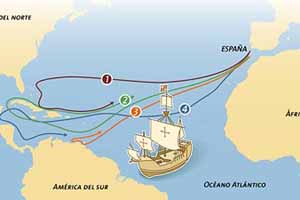El verbo to be, to have y to do son tres de los verbos que se utilizan con mayor frecuencia en inglés.
Cada uno tiene un uso específico y es importante entender las diferencias entre ellos para poder hablar con fluidez y precisión en inglés.
Aquí conocerás cómo utilizarlos de forma adecuada.
Uso del verbo to be
El verbo to be se utiliza para identificar a alguien o algo, para describir el estado físico o emocional de alguien o algo, y para indicar la hora y la fecha.
En presente simple, se conjuga de la siguiente manera:
- Afirmativo: I am, you are, he/she/it is, we are, you are, they are.
- Negativo: I am not, you are not, he/she/it is not, we are not, you are not, they are not.
- Interrogativo: Am I?, Are you?, Is he/she/it?, Are we?, Are you?, Are they?
Uso del verbo to have
El verbo to have se utiliza para hablar de posesión, experiencia, habilidades y relaciones. Puede ser utilizado como verbo principal y como verbo auxiliar.
En presente simple, se puede conjugar de la siguiente manera:
- Afirmativo como verbo principal: I have, you have, he/she/it has, we have, you have, they have.
- Negativo como verbo principal: I do not have, you do not have, he/she/it does not have, we do not have, you do not have, they do not have.
- Interrogativo como verbo principal: Do I have?, Do you have?, Does he/she/it have?, Do we have?, Do you have?, Do they have?
- Afirmativo como verbo auxiliar: I have been, you have been, he/she/it has been, we have been, you have been, they have been.
- Negativo como verbo auxiliar: I have not been, you have not been, he/she/it has not been, we have not been, you have not been, they have not been.
- Interrogativo como verbo auxiliar: Have I been?, Have you been?, Has he/she/it been?, Have we been?, Have you been?, Have they been?
Uso del verbo to do
El verbo to do se utiliza para hacer preguntas, negaciones y para hablar de actividades.
También se utiliza como verbo auxiliar en preguntas y negaciones en otros tiempos verbales.
En presente simple, se conjuga de la siguiente manera:
- Afirmativo: I do, you do, he/she/it does, we do, you do, they do.
- Negativo: I do not, you do not, he/she/it does not, we do not, you do not, they do not.
- Interrogativo: Do I?, Do you?, Does he/she/it?, Do we?, Do you?, Do they?
Ejemplos y usos del verbo to be
El verbo «to be» en inglés es equivalente a los verbos «ser» y «estar» en castellano.
Conjugación:
- Infinitivo: to be
- Presente: am / is / are
- Pasado: was / were
- Participio: been
Presente del indicativo
El presente del indicativo (simple present) es el siguiente:
- Yo soy/estoy: I am
- Tu eres/estás: You are
- El/ella es/está: He/she/it is
- Nosotros somos/estamos: We are
- Vosotros sois/estáis: You are
- Ellos/ellas son/están: They are
Pasado del verbo to be
El tiempo pasado (simple past) es el siguiente:
- Yo era/estaba (fui/estuve): I was
- Tu eras/estabas (fuiste/estuviste): You were
- El/ella era/estaba (fue/estuvo): He/she/it was
- Nosotros éramos/estábamos (fuimos/estuvimos) We were
- Vosotros erais/estabais (fuisteis/estuvisteis): You were
- Ellos/ellas eran/estaban (fueron/estuvieron): They were

Verbo to have
El verbo «to have» en inglés es equivalente a los verbos «haber» y «tener» en castellano.
Su declinación en el presente del indicativo (simple present) es la siguiente:
- Yo he/tengo: I have
- Tu has/tienes: You have
- El/ella ha/tiene: He/she/it has
- Nosotros hemos/tenemos: We have
- Vosotros habéis/tenéis: You have
- Ellos/ellas han/tienen: They have
El verbo «to have» se utiliza para indicar posesión o relación con algo.
Ejemplo:
- I have a car. (Tengo un coche.)
- She has two brothers. (Ella tiene dos hermanos.)
- They have a lot of work. (Tienen mucho trabajo.)
También se usa para hablar de experiencias o situaciones pasadas:
- I have been to Paris. (He estado en París.)
- She has studied Spanish for two years. (Ella ha estudiado español durante dos años.)
- They have lived in New York since 2010. (Han vivido en Nueva York desde 2010.)
En la forma interrogativa, se invierte el orden del sujeto y el verbo «to have»:
- Do I have your phone number? (¿Tengo tu número de teléfono?)
- Does she have any pets? (¿Tiene alguna mascota?)
- Have they finished their project? (¿Han terminado su proyecto?)
Y en la forma negativa, se añade «not» después del verbo «to have»:
- I do not have any money. (No tengo dinero.)
- She does not have time. (Ella no tiene tiempo.)
- They have not decided yet. (No han decidido aún.)
Verbo to do
El verbo to do en inglés puede funcionar como verbo ordinario, con el significado de «hacer», o como verbo auxiliar.
El verbo to do se utiliza para hacer preguntas, negaciones y para hablar de actividades. También se utiliza como verbo auxiliar en preguntas y negaciones en otros tiempos verbales.
Este verbo auxiliar se puede utilizar para formar preguntas y negaciones en inglés, además tiene su propio significado.
En afirmaciones, el verbo «to do» se usa para enfatizar una acción o para hacer una afirmación más fuerte.
Su declinación en el presente del indicativo (simple present) es la siguiente:
- Yo hago: I do
- Tu haces: You do
- El/ella hace: He/she/it does
- Nosotros hacemos: We do
- Vosotros hacéis: You do
- Ellos/ellas hacen: They do
Pasado simple
En el pasado simple (simple past) tiene una única forma:
- Yo hice: I did
- Tu hicíeste: You did
- El/ella hizo: He/she/it did
- Nosotros hicímos: We did
- Vosotros hicisteis: You did
- Ellos/ellas hicieron: They did
Conjugación de los verbos
Los verbos to be, to have y to do se conjugan en todos los tiempos verbales de la siguiente manera:
To be:
- Presente: am, is, are
- Pasado: was, were
- Futuro: will be Condicional: would be
To have:
- Presente: have, has
- Pasado: had Futuro: will have
- Condicional: would have
Verbo To do:
- Presente: do, does
- Pasado: did
- Futuro: will do
- Condicional: would do






 Tercer Viaje de Cristóbal Colón
Tercer Viaje de Cristóbal Colón